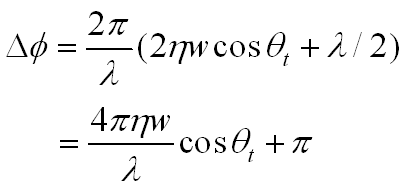

Notice that as the distance increases, the light must spread out over a larger surface and the surface brightness decreases in accordance with a "one over r squared" relationship. If a beam of monochromatic light is passed through a solution then the absorbance (formerly known as optical density) can be measured by the experimental values of the original intensity of the beam of light and the. This relationship can be illustrated by the diagram below, which shows the apparent brightness of a source with luminosity L 0 at distances r, 2r, 3r, etc. A Absorbance Io Intensity of the incident radiation I Intensity of the transmitted radiation. For instance, if you have installed three bulbs in your room. Suppose that some time later the brightness of the light is either greater or lesser if the intensity diminished you would know that the source was moving away from you and if it became brighter you would know that the source was moving towards you (assuming the light source itself remained the same). Calculating the lumen intensity for light and luminance intensity within a room can be very easy. Suppose you were to use a light meter to measure an initial intensity I i, or brightness, a distance r from a light source. See also Parking lot light pole installation cost What is light intensity The intensity of light is the amount of light that is visible. The light will get 25 of the energy if it is moved twice as far away from the plant. The intensity or brightness of light as a function of the distance from the light source follows an inverse square relationship. The inverse square law states that the intensity of light is determined by the square of the distance from the source. The light energy flux may be expressed in terms of the incident x-ray energy flux and the x-ray absorption and conversion properties of the scintillator (7,8,9). Table 1 shows the dependence of intensity (I) upon the distance (r) from a 60-watt light bulb. Luminous Intensity Luminous intensity is defined as dId / d, where d is the luminous flux (light energy flux in watts per m2) emitted within a solid angle d. More on Brightness as a Function of Distance Power is often expressed in units of watts. The intensity of the light to an observer from a source is inversely proportional to the square of the distance from the observer to the source.


 0 kommentar(er)
0 kommentar(er)
